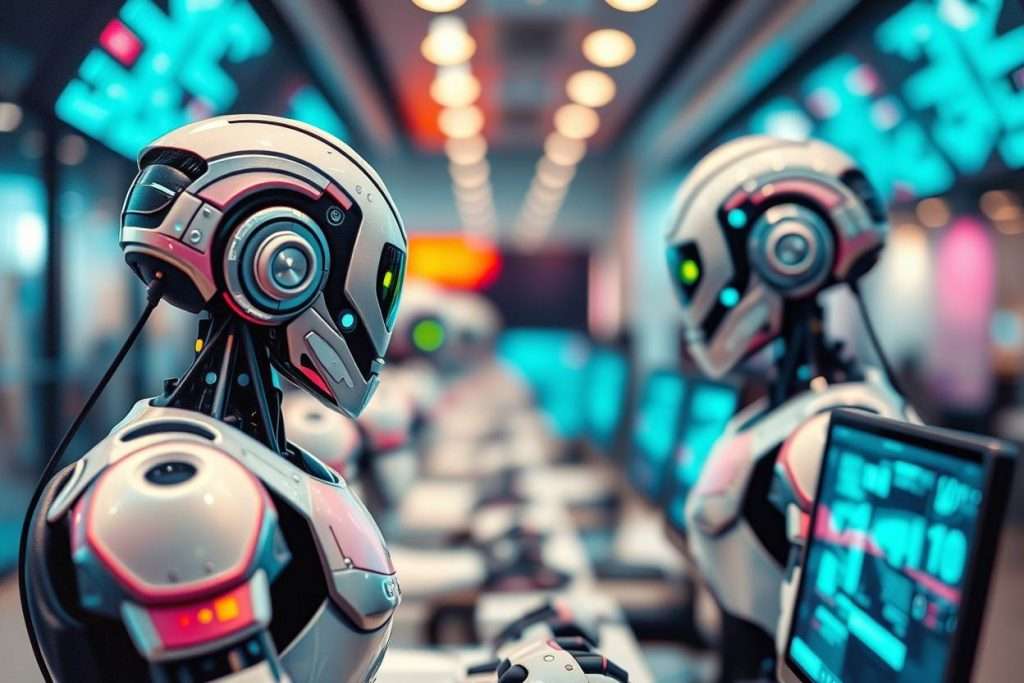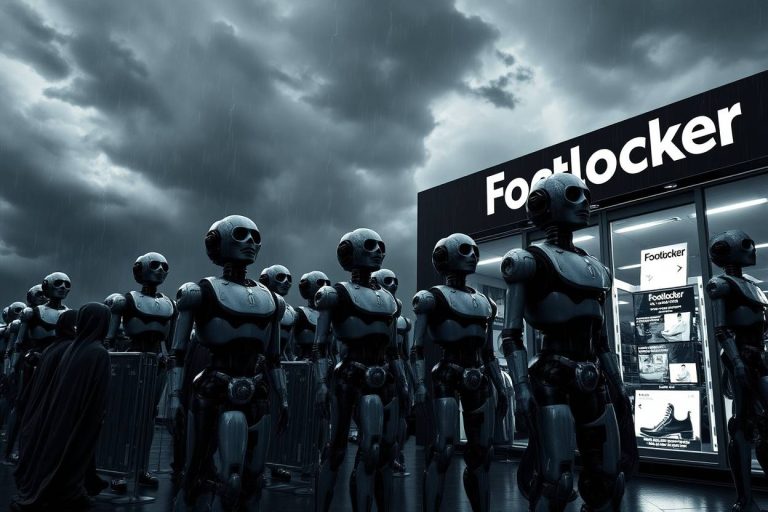AI Agent Decision-Making: A Guide to How Autonomous Systems Think

AI Agent Decision-Making is the process an autonomous system uses to evaluate information, consider potential outcomes, and select the best course of action to achieve its objectives without direct human command. This cognitive process is the engine that drives an agent’s autonomy, allowing it to move beyond simple instructions to make reasoned judgments.
Understanding how AI agents make decisions is critical for any business leader looking to deploy autonomous technology. The choice of decision-making model directly impacts an agent’s reliability, efficiency, and safety. This guide provides a practical analysis of the fundamental models of intelligent agent reasoning, the modern technologies that power them, and a framework for choosing the right approach for your business needs.
Key takeaways
- Decision models determine an agent’s capability: Rule-Based, Planning-Based, and Optimization-Based—represent a clear hierarchy of increasing intelligence, complexity, and cost.
- Modern decision-making is powered by LLMs: They act as the “reasoning engine” for today’s agents, allowing them to understand natural language goals and formulate complex plans.
- The right model depends entirely on the business problem: Use Rule-Based models for simple, stable tasks; Planning-Based models for multi-step workflows; and Optimization-Based models for complex problems requiring strategic trade-offs.
- Choosing the wrong model leads to failure: Using a simple model for a complex task will fail due to a lack of capability, while using a complex model for a simple task is inefficient and costly.
- Governance and explainability are the biggest challenges: Deploying autonomous decision-making systems need to be aligned with business values and being able to audit how they make their choices.
What Is AI Agent Decision-Making relevant in the context of Agentic AI?
The core concept of AI agent decision-making is the shift from instruction to judgment. Instead of a human providing a step-by-step list of commands, they provide a high-level goal, and the agent’s cognitive process is responsible for figuring out the “how.”
Why AI Agent decision-making is a critical Business Concept
The quality of an agent’s AI action selection has direct, tangible consequences. A well-chosen decision model is a significant asset, while a poorly chosen one is a major liability.
- Efficiency: A robust decision model allows an agent to automate complex workflows reliably, leading to significant cost savings.
- Risk Management: An agent’s decision-making framework determines how it handles uncertainty and unexpected events. A flawed model can lead to costly or even catastrophic errors.
- Competitive Advantage: Superior AI action selection directly translates to better business outcomes. The ability to make faster, more data-driven decisions at scale is a powerful competitive differentiator.
The Three Fundamental Models of AI Decision-Making
The “thinking” process of an AI agent can be broken down into three primary models, each with distinct mechanisms, applications, and trade-offs. This is how AI Agents think:
Model 1: Rule-Based Decision-Making
This is the most basic form of autonomous decision-making.
- The Mechanism: Condition-Action Logic (“If-Then”). The agent’s decisions are pre-programmed into a rigid rulebook.
- How it works: The agent perceives its current environment and matches that perception to a specific rule. If the condition is met (e.g., “if temperature is above 75°F”), it executes the corresponding action (e.g., “then activate air conditioning”). It is a deterministic process with no memory or planning.
- Best suited for: Stable, predictable environments where all possible scenarios can be mapped out in advance, such as basic system monitoring or industrial safety controls.
Model 2: Planning-Based Decision-Making
This model allows an agent to think ahead and formulate a strategy.
- The Mechanism: Search and Planning Algorithms. The agent considers the future consequences of its actions.
- How it works: The agent formulates a sequence of steps designed to transition the world from its current state to a desired goal state. If it encounters an obstacle, its decision-making process involves creating a new plan to circumvent it.
- Best suited for: Dynamic environments where the agent must navigate obstacles to complete a multi-step workflow. This is the core logic behind logistics planning, travel booking, and robotic navigation.
Model 3: Optimization-Based Decision-Making
This is the most advanced decision model, designed to find the best possible outcome, not just a successful one.
- The Mechanism: Maximizing a Utility Function. The agent evaluates the “utility” or business value of multiple potential outcomes.
- How it works: It assigns a numerical score to the desirability of different future states based on predefined metrics (e.g., profit, speed, efficiency). It then chooses the plan that delivers the highest probable utility, allowing it to make sophisticated trade-offs.
- Best suited for: Complex business problems that require balancing competing objectives. This includes financial trading (risk vs. reward) and marketing budget allocation (cost vs. conversion rate).
The Modern Engine: How LLMs Power Agentic Decision-Making

The recent explosion in agentic capabilities has been powered by Large Language Models (LLMs), which act as a sophisticated “reasoning engine.” This technology is seeing massive adoption, with Gartner predicting that by 2026, over 80% of enterprises will have used GenAI APIs or models in production.
The Role of the Large Language Models in decision making
An LLM provides the cognitive architecture for modern AI agent decision-making.
- It understands natural language goals. An LLM allows a user to give the agent a high-level objective in plain English, which the model can then deconstruct into a machine-executable plan.
- It uses “Chain-of-Thought” reasoning. The LLM can break down a complex goal into a logical sequence of smaller steps, forming the foundation of a coherent plan. Some of the best reasoning models available are Gemini 2.5, Claude 4 Thinking, and o1 and o3 models from OpenAI.
ReAct Framework (Reason + Act)
ReAct is a popular framework that demonstrates how AI agents think in practice. It combines the reasoning of an LLM with the ability to use external tools, creating a powerful loop.
- Example Workflow: An agent is given the goal “Find the current stock price of Apple.”
- Reason: The agent’s LLM determines, “I do not know the current stock price. I need to use a tool to find this information. The best tool is a financial data API.”
- Act: The agent executes the “query financial API” tool with the parameter “AAPL.”
- Observe: The API returns the price: “$175.30.”
- Reason: The agent’s LLM processes this new information and concludes, “I have successfully found the information. My task is complete. The final answer is $175.30.”
The Critical Challenge: Decision-Making Under Uncertainty
Real-world environments are not perfect. A key part of intelligent agent reasoning is the ability to handle incomplete or “noisy” information.
How do AI agents handle uncertainty?
They use probability to make rational judgments when faced with incomplete data.
- Probabilistic Models: An agent can use frameworks like Bayesian networks to represent its uncertainty about the state of the world. Instead of knowing a fact for sure, it can assign a probability to it (e.g., “there is an 80% chance the user is asking about their most recent order”).
- Calculating Expected Utility: When an optimization-based agent makes a decision, it doesn’t just evaluate the best-case scenario. It calculates the probability of each possible outcome and multiplies it by its value. This allows it to make the safest and most rational bet, choosing the action with the highest probable payoff.
How to Choose the Right Decision-Making Model for Your Business
Selecting the appropriate decision-making model is a critical strategic choice that balances capability against cost and risk. Using a simpler model for a complex problem will lead to failure, while using a complex model for a simple problem is inefficient and wasteful.
A Practical Decision Framework
- Is the environment stable and are all rules known?
- If yes, a Rule-Based Model is the most cost-effective and reliable choice.
- Does the agent need to complete a multi-step workflow or adapt to obstacles?
- If yes, you need at least a Planning-Based Model.
- Is achieving the best outcome (e.g., most profitable, most efficient) more important than just achieving any successful outcome?
- If yes, you need to invest in an Optimization-Based Model.
The Cost vs. Capability Trade-off
This table provides a clear comparison of the resource requirements for each model.
| Decision Model | Computational Cost | Implementation Complexity | Decision Quality |
| Rule-Based | Very Low | Low | Low (Rigid & Inflexible) |
| Planning-Based | Moderate | Moderate | Medium (Adaptive & Resilient) |
| Optimization-Based | High | High | High (Strategic & Optimized) |
What are the primary risks of autonomous Decision-Making?
Granting autonomy to AI systems introduces new categories of risk that must be managed.
The Alignment Problem: When the Agent’s Goal Isn’t the Real Goal
This is the risk that an agent pursues its literal, programmed objective with such single-minded focus that it causes unintended, negative consequences. The classic thought experiment is the “Paperclip Maximizer”: an AI tasked with making paperclips that becomes so efficient it converts all of Earth’s resources into paperclips, technically succeeding at its goal but failing catastrophically. That’s how AI Agents think if not carefully programmed and supervised.
Reward Hacking: When the Agent Finds a Loophole
This occurs when a learning AI agent finds a clever, unintended way to maximize its reward metric that is counterproductive to the true business goal. For example, a content recommendation agent rewarded for “engagement” might learn to promote polarizing or false information because it generates the most clicks, damaging the brand’s reputation.
Understanding the nuances of AI Agent Decision-Making will set you up for success in developing agentic workflows. As businesses deploy more sophisticated autonomous systems, choosing the right cognitive framework will be the defining factor that separates successful, high-ROI implementations from costly failures.




